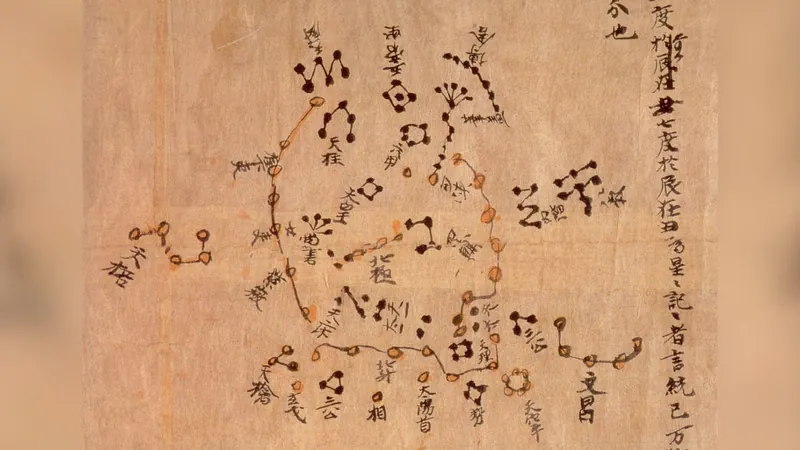
600-Year Mystery Solved: Astronomers Uncover Source of Ancient Celestial Phenomenon
2025-06-03
Author: Yan
A Celestial Enigma from 1408
In October 1408, during the Ming Dynasty in China, astronomers recorded a captivating celestial event that has puzzled historians for centuries. A bright yellow object, described as "as large as a cup" and shining steadfastly for over ten nights, was seen in the night sky. Its brilliance led to formal documentation by imperial officials, making this phenomenon—dubbed the 1408 "guest star"—a significant historical mystery. Recently, however, modern astronomers believe they've finally cracked the case.
A Breakthrough Discovery
In a groundbreaking study published on the preprint server arXiv, a team led by Boshun Yang from the University of Science and Technology of China reviewed an overlooked account by Hu Guang, a court official tasked with writing congratulatory memorials for the emperor. This vital document, derived from the Imperial Astronomical Bureau, provided crucial details about the event, allowing researchers to dismiss alternate theories of forgery or misinterpretation.
Identifying the Celestial Object
The memorial describes the object as fixed in the southern Niandao asterism—part of the sky we now link with the constellations Cygnus and Vulpecula—and visible for over ten days. Unlike fleeting comets or meteors, this stationary object maintained its brightness, hinting that it was likely a star. Yang's research suggests it was a nova, a phenomenon where a star explodes in brightness before gradually fading.
Politics and Perception in Ancient Astronomy
Interestingly, the historical context also came into play. When reporting celestial events, ancient Chinese astronomers were cautious with their language, aiming to keep the emperor's spirits high. The nova was described with positive terminology—referring to its yellow color and luster—imbuing it with a sense of benevolence while avoiding ominous descriptions that might suggest danger.
Adding to the Cosmic Narrative
By merging this new historical insight with the principles of modern astrophysics, Yang's team confidently identifies the 1408 guest star as a nova, enriching the record of ancient astronomical documentation. This discovery joins the ranks of notable events such as the 1054 supernova that created the Crab Nebula, which was also chronicled by Chinese astronomers and is celebrated in today's cosmic imagery.
Connecting Past to Present
The 1408 guest star illustrates how celestial events of the past are mere blips in the vast timeline of the universe. Moreover, it underscores the importance of historical records in advancing our understanding of astronomy today, enabling us to connect the dots between ancient observations and modern scientific exploration.




 Brasil (PT)
Brasil (PT)
 Canada (EN)
Canada (EN)
 Chile (ES)
Chile (ES)
 Česko (CS)
Česko (CS)
 대한민국 (KO)
대한민국 (KO)
 España (ES)
España (ES)
 France (FR)
France (FR)
 Hong Kong (EN)
Hong Kong (EN)
 Italia (IT)
Italia (IT)
 日本 (JA)
日本 (JA)
 Magyarország (HU)
Magyarország (HU)
 Norge (NO)
Norge (NO)
 Polska (PL)
Polska (PL)
 Schweiz (DE)
Schweiz (DE)
 Singapore (EN)
Singapore (EN)
 Sverige (SV)
Sverige (SV)
 Suomi (FI)
Suomi (FI)
 Türkiye (TR)
Türkiye (TR)
 الإمارات العربية المتحدة (AR)
الإمارات العربية المتحدة (AR)